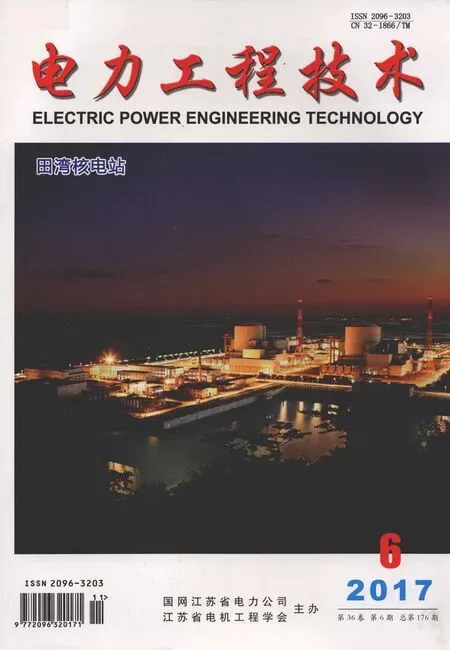基于故障全信息的自适应模糊融合选线技术
沈兴来, 杨 智
(1. 国网江苏省电力公司徐州供电公司,江苏 徐州 221003 ; 2. 中国矿业大学电动学院,江苏 徐州 221116)
基于故障全信息的自适应模糊融合选线技术
沈兴来1, 杨 智2
(1. 国网江苏省电力公司徐州供电公司,江苏 徐州 221003 ; 2. 中国矿业大学电动学院,江苏 徐州 221116)
小电流接地系统发生单相接地故障时,由于故障信号微弱、运行方式变化、故障类型复杂等因素的影响,小电流接地系统故障选线一直是困扰现场的一个技术难题。综合运用故障后零序电压电流的全信息,基于信息融合技术,利用群体比幅比相法、五次谐波比相法、小波分析法进行故障后的稳态及暂态信息进行综合分析,采用模糊理论构造出了各方法判据的隶属度函数以及权系数的隶属度函数,提高选线方法的自适应能力,提高选线的成功率。在PSCAD/EMTDC中搭建了单端辐射状配电网模型,仿真计算结果验证了该方法的高可靠性以及适用性。
配电网;单相接地故障选线;稳态信息;暂态信息;模糊理论;隶属度函数
0 引言
智能配电网是智能电网的核心部分之一,其中故障选线技术作为保证配电网安全可靠稳定运行的基础性工作,具有重要的现实意义[1]。目前,国内外学者提出了许多针对单相接地故障的选线方法[2],主要分为3类:稳态信号的选线方法、暂态信号的选线方法以及信息融合的选线方法。稳态信号的选线方法主要有零序电流比幅法[3]、零序电流有功分量法[4]、零序导纳法[5,6]等。其选线原理简单,易于实现,但不能充分利用故障发生时产生的全信息,选线受干扰因素影响较大,准确率较低。暂态信号选线方法主要有首半波法[7,8]、小波分析法[9,10]、暂态能量法[11]等,其选线原理适用范围较广,但是其信号持续时间短,对装置硬件的敏感度要求较高,不易实现。信息融合的选线方法有很多,包括:人工神经网络[12-14]、粗糙集理论[15]、D-S证据理论[16]、模糊理论[17,18]、蚁群算法[19]等。
据统计,自动选线装置在90年代末期退出率达到90%以上[20],基于单一故障判据的选线方法难以可靠地运用于现场选线[21]。因此,为了提高选线方法广泛的适用性,通过采集故障后零序电压电流全信息,计算不同方法、不同线路的隶属度函数。对于各种选线方法,利用特征向量的相对大小来分配权值,将处理后得到的数据进行信息融合,判断出选线结果。由于模糊理论应用广泛,易于实现,而其它融合方法尚有不成熟的地方,所以文中选择模糊理论来进行信息融合。
1 基于模糊融合的选线方法
故障后零序电压电流全信息融合过程如图1所示。

图1 故障信息融合过程Fig.1 The process of fault information fusion
利用模糊理论进行信息融合遇到2个具有模糊性问题,一是故障后某一线路在某一判据下具有故障特征的明显程度;二是在多种选线方法时,某一选线判据的可信程度。针对这2个模糊性问题,对群体比幅比相法、零序电流5次谐波比相法、小波分析法分别建立故障测度隶属函数和判据权系数隶属函数。


(1)

(2)
(3) 小波分析法。由小波变换检测信号奇异性的原理,故障暂态零序电流小波系数的模极大值能够反映暂态零序电流信号的突变点和幅值,因此可通过比较各线路小波变换的模极大值来选出故障线路,模值最大的即为故障线路,且其符号与其他线路相反。作出如下的隶属度函数:
(3)
式(3)中:|Mk|为各线路零序电流小波变换系数的模极大值;|M|sum为各线路零序电流小波变换系数的模极大值之和。


(4)

(5)

(6)
2 仿真与验证
2.1 PSCAD仿真
为了验证文中方法的有效性和可靠性,利用PSCAD搭建一个单端辐射型配网模型,如图2所示。所建立的模型为10 kV配电网,一条母线带有5条出线,可通过投切消弧线圈来改变中性点运行方式。考虑如下因素对该方法的影响:故障距离、故障类型、故障电阻、故障初相角等。针对不同故障情况,计算相应的特征量。
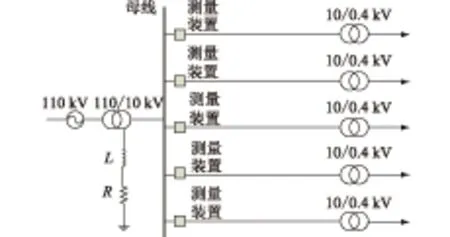
图2 10 kV单端辐射型配电网示意图Fig.2 Schematic diagram of 10 kV single-terminal radial distribution network
2.2 仿真结果
当接地电阻分别为0.01 Ω,50 Ω,1000 Ω时,各线路零序电流变化情况如图3—5所示;母线接地时电流变化情况如图6所示。
不同故障电压初相角时的仿真结果如图7、图8所示。其中图7为电压过0时发生故障,图8为电压最大时发生故障。
其次,不同的故障电阻和接地方式下该方法的选线结果如表1、表2所示(假设故障相为A相)。
在中性点不接地方式下,故障发生时电压处于峰值,金属性接地与过渡电阻为1000 Ω时,仿真数据、选线判据分析结果分别见表1和表2,且由表1、表2可得,选线结果皆为线路2。
在中性点经消弧线圈接地系统中,故障发生在电压过零点,金属性接地与过渡电阻为1000 Ω时,仿真数据、选线判据分析结果分别见表3和表4,且由表3、表4可得,选线结果皆为线路2。

图3 不同中性点接地方式下金属性接地故障时各线路首端零序电流Fig.3 The zero sequence currents at the initial ends of each line when metallic grounding fault occurs in distri-bution systems with different neutral grounding modes
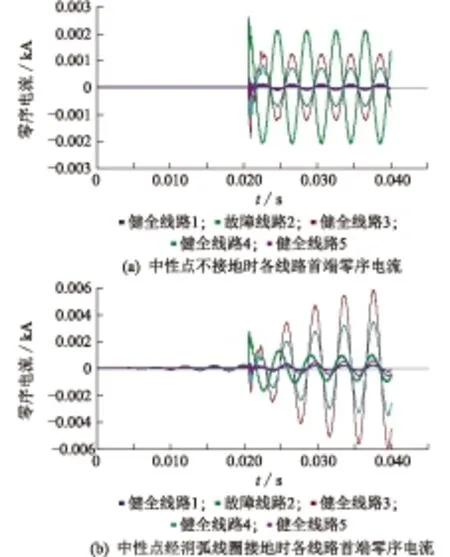
图5 不同中性点接地方式下当故障电阻为1000 Ω时各线路首端零序电流波形Fig.5 The zero sequence currents at the initial ends of each line when fault resistance is 1000Ω in distribu- tion systems with different neutral grounding modes

图4 不同中性点接地方式下当故障电阻为50 Ω时各线路首端零序电流Fig.4 The zero sequence currentsat the initial ends of each line when fault resistance is 50 Ω in distribution systems with different neutral grounding modes

图6 不同中性点接地方式下当母线故障时各线路首端零序电流波形Fig.6 The zero sequence currents at initial ends of each line when bus fault occurs in distribution systems with different neutral grounding modes

图7 中性点不接地系统不同故障初相角时各线路首端零序电流波形Fig.7 The zero sequence currents at initial ends of each line when the faults with different inception angles occur in ungrounded distribution system
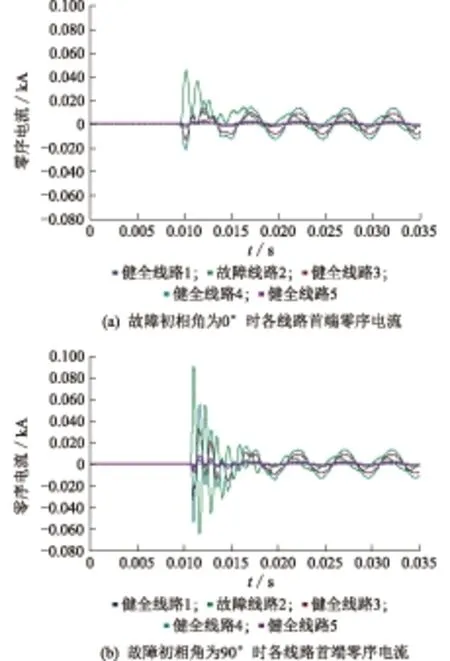
图8 消弧线圈接地系统不同故障初相角时各线路首端零序电流波形Fig.8 The zero sequence currentsat initial ends of each line when the faults with different inception angles occur in arc-suppression coil grounded system

线路编号故障测度隶属函数值判据权系数函数值群体比幅比相法五次谐波比相法小波分析法群体比幅比相法五次谐波比相法小波分析法选线判据分析结果线路10.48300.00000.00000.50000.00000.50000.2415线路21.00000.99150.96920.25110.24890.50000.9825线路30.32450.00000.00000.50000.00000.50000.1623线路40.76470.00000.00000.50000.00000.50000.3824线路50.54280.00000.00000.50000.00000.50000.2714

表2 中性点不接地系统当故障电阻为1000 Ω时的选线结果Table 2 The fault line selection results when fault resistance is 1000 Ω in ungrounded system
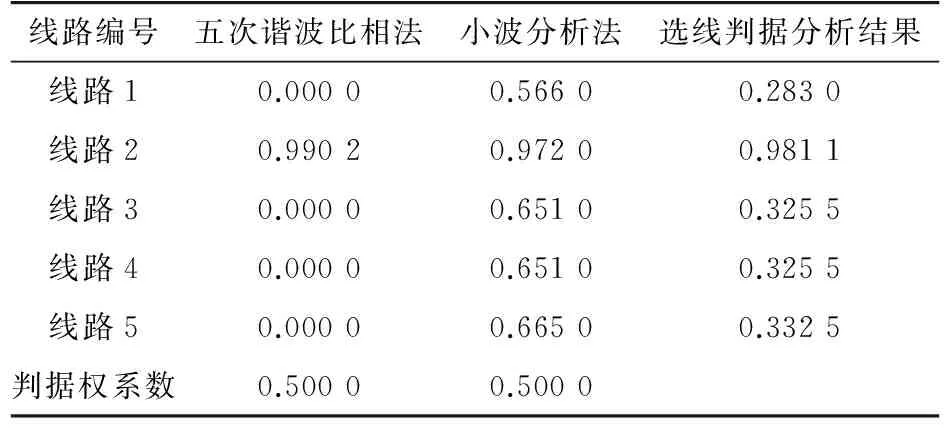
表3 中性点经消弧线圈接地系统当故障电阻为0.01 Ω时的选线结果Table 3 The fault line selection results when fault resistance is 0.01 Ω in arc-suppressioncoil grounded system
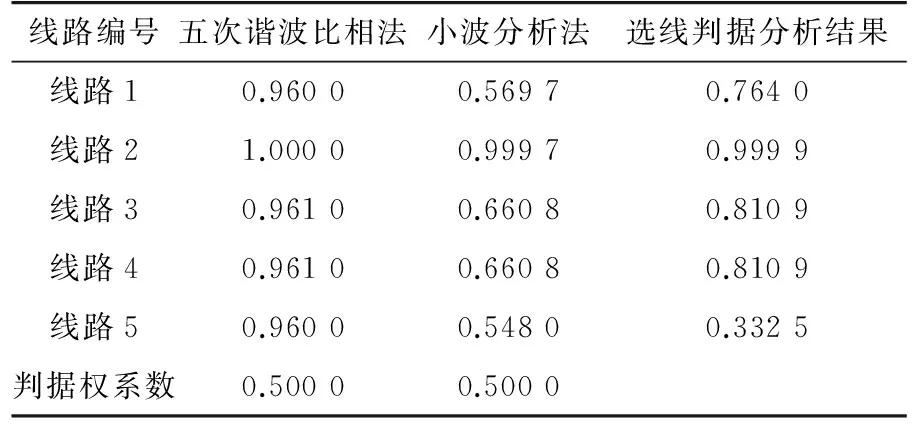
表4 中性点经消弧线圈接地系统当故障电阻为1000 Ω时的选线结果Table 4 The fault line selection results when fault resistance is 1000 Ω in arc-suppression coil grounded system
3 结论
以前所用的选线装置不能正确地选出故障线路,究其缘由,是因为之前的选线装置大多是根据单一的选线原理设计的,而单一选线判据很容易在外界干扰下造成误判,从而不能选出故障线路。文中提出利用故障后零序电压电流的全信息,计算不同方法、不同线路的隶属度函数。由所选方法特征向量的相对大小来分配权值,将处理后得到的数据用模糊融合的选线技术进行融合,利用融合后的数据进行判断。由PSCAD/EMTDC仿真验证可以得出,对于不同接地方式、不同故障电阻情况下,可以正确地进行故障选线,具有广泛的适用性。
[1] 张心洁,葛少云,刘 洪,等. 智能配电网综合评估体系与方法[J]. 电网技术,2014,38(1):40-46.
ZHANG Xinjie,GE Shaoyun,LIU Hong,et al. Comprehensive evaluation system and method of intelligent distribution network[J]. Power Grid Technolngy,2014,38(1):40-46.
[2] 王清亮. 单相接地故障分析与选线技术[M]. 北京: 中国电力出版社,2013.
WANG Qingliang. Single phase grounding fault analysis and line selection technology[M]. BeiJing: China Electric Power Press,2013.
[3] 张小桃,乔小梅,王爱军,等. 小电流接地系统故障选线分析[J]. 华北水利水电学院学报,2010,31(6):89-93.
ZHANG Xiaotao,QIAO Xiaomei,WANG Aijun, et al. Fault line selection of small current grounding system[J]. Journal of North China Institute of water conservancy and hydropower,2010,31(6): 89-93.
[4] 庄 伟,牟龙华. 基于零序电流有功分量的配电网接地故障定位[J]. 同济大学学报(自然科学版),2014,42(3):468-473.
ZHUANG Wei,MOU Longhua. Grounding fault location of distribution network based on active component of zero sequence current[J]. Journal of Tongji University(Natural Science Edition),2014,42(3):468-473.
[5] 曾祥君,尹项根,张 哲,等. 零序导纳法馈线接地保护的研究[J]. 中国电机工程学报,2001,21(4):5-10.
ZENG Xiangjun,YIN Xianggen,ZHANG Zhe,et al. Research on feeder grounding protection based on zero sequence admittance method[J]. Chinese Journal of Electrical Engineering,2001,21(4):5-10.
[6] LI Bo. Technology of fault line selection for single-phase-to-earth fault in small current grounding system[J]. Nonlinear Dynamics,2012,67(3):2111-2122.
[7] 郗来迎,王崇林,布朋生,等. 基于首半波与有功分量的综合选线装置[J]. 煤矿机械,2008,29(8):114-116.
XI Laiying,WANG Chonglin,BU Pengsheng,et al. Integrated line selection device based on first half wave and active component[J]. Coal Mine Machinery,2008,29(8):114-116.
[8] 胡 佐,李欣然,石吉银. 基于残流与首半波综合的接地选线方法研究[J]. 继电器,2006,34(7):70-73.
HU Zuo,LI Xinran,SHI Jiyin. Research on grounding line selection method based on residual and first half wave synthesis[J]. Electric Relay,2006,34(7):70-73.
[9] 贾智彬,顾佩颖. 行波小波分析法对单相接地故障选线方法的研究[J]. 电气开关,2013,51(6):19-22,27.
JIA Zhibin,GU Peiying. Study on fault line selection of single phase to ground fault based on traveling wave wavelet analysis[J]. Electrical Switching,2013,51(6):19-22,27.
[10] 周陈斌. 基于提升小波的电力系统单端行波测距仿真[J]. 江苏电机工程,2007(5):28-31.
ZHOU Chenbin. Simulation of single terminal traveling wave fault location based on lifting wavelet[J]. Jiangsu Electrical Engineering,2007(5):28-31.
[11] 朱 丹,贾雅君,蔡 旭,等. 暂态能量法原理选线[J]. 电力自动化设备,2004,24(3):75-78.
ZHU Dan,JIA Yajun,CAI Xu,et al. Transient energy method[J]. Electric Power Automation Equipment,2004,24(3):75-78.
[12] 曹运刚,陈 平,杨茂亭,等. 基于人工神经网络的小电流接地故障选线方法研究[J]. 国网技术学院学报,2015,18(1):21-25,29.
CAO Yungang,CHEN Ping,YANG Maoting,et al. Research on fault line selection method for small current grounding fault based on artificial neural network[J]. Journal of China National Technical College,2015,18(1):21-25,29.
[13] 包立公,张瑞祥. 人工神经网络技术在电力系统中的应用[J]. 江苏电机工程,2010,29(5):52-55.
BAO Ligong,ZHANG Ruixiang. Application of Ethernet in MSTP System[J]. Jiangsu Electrical Engineering,2010,29(5):52-55.
[14] 刘子俊,孙 健. 基于遗传算法和神经网络的分时段风速预测方法[J]. 江苏电机工程,2015,34(1):6-8.
LIU Zijun,SUN Jian. The wind speed prediction based on genetic algorithm and neural network with different periods[J]. Jiangsu Electrical Engineering,2015,34(1):6-8.
[15] 张 凯,袁兆强,范李平,等. 基于改进算法的粗糙集理论故障选线装置研究[J]. 电力系统保护与控制,2010,38(4):15-20.
ZHANG Kai,YUAN Zhaoqiang,FAN Linping,et al. Research on fault line selection based on improved algorithm of rough set theory[J]. Power System Protection and Control,2010,38(4):15-20.
[16] 戴武昌,严干贵,孙秋鹏,等. DS证据理论在小电流接地系统的故障选线中的应用[J]. 东北电力大学学报,2007,27(6):19-23.
DAI Wuchang,YAN Gangui,SUN Qiupeng,et al. Application of DS evidence theory in fault line selection of small current grounding system[J]. Journal of Northeast Dianli University,2007,27 (6):19-23.
[17] 陈照业,张均伟,马星河,等. 基于模糊理论的煤矿高漏选线算法的研究[J]. 煤矿机电,2012(6):1-4,8.
CHEN Zhaoye,ZHANG Junwei,MA Xinghe,et al. Research on the algorithm of high leakage line selection based on Fuzzy Theory[J]. Coal Mine Mechanical and Electrical,2012(6):1-4,8.
[18] 崔高颖,周 玉,郑爱霞,等. 基于熵权的计量技术监督模糊综合评价方法[J]. 江苏电机工程,2016,35(5):14-18.
CUI Gaoying,ZHOU Yu,ZHENG Aixia,et al. A fuzzy comprehensive evaluation method based on entropy weight for metering technical supervision[J]. Jiangsu Electrical Engineering,2016,35(5):14-18.
[19] 庞清乐,孙同景,孙 波,等. 基于蚁群算法的神经网络配电网故障选线方法[J]. 继电器,2007,35(16):1-6.
PANG Qingle,SUN Tongjing,SUN Bo,et al. Neural network based fault line selection method for distribution network based on ant colony algorithm[J]. Electric Relay,2007,35(16):1-6.
[20] 束洪春. 配电网络故障选线[M]. 北京:机械工业出版社,2008.
SHU Hongchun. Distribution network fault line selection[M]. BeiJing:Machinery Industry Press,2008.
[21] 刘 诗. 电力安全工作规程[M]. 北京:中国电力出版社,2009.
LIU Shi. Electric safety working procedure[M]. BeiJing:China Electric Power Press,2009.

沈兴来
沈兴来(1983—),男,江苏徐州人,工程师,主要研究方向为电力系统自动化(E-mail:56902273@qq.com);
杨 智(1992—),男,江苏徐州人,硕士研究生,主要研究方向为配电网故障定位(E-mail:2293655518@qq.com)。
(编辑钱 悦)
ASelf-adaptedFaultLineSelectionMethodBasedonCompleteDataFusionTheory
SHENG Xinglai1, YANG Zhi2
(1. State Grid Jiangsu Electric Power Company Xuzhou Power Supply Company, Xuzhou 221003, China;2. School of Information and Electrical Engineering, China University of Mining & Technology, Xuzhou 221116, China)
Due to the factors such as weak fault-induced signals, change of neutral grounding mode, and complicated fault conditions, fault line selection in non-effectively grounded system has been a technical challenge in actual field. Based on data fusion technology, the information of fault-generated zero-sequence voltages and currents is fully analyzed by means of colony amplitude comparison-based, the fifth harmonics-based and wavelet analysis-based methods. Fuzzy theory is employed to create membership functions of the criteria and weights of each method, which improves the adaptive ability and success rate. A single-terminal radial distribution grid model is constructed in PSCAD/EMTDC to test the performance of the presented method and the calculation results demonstrate the high reliability and applicability of the method.
distribution network; single-phase-to-ground fault line selection; steady-state information; transient-state information; fuzzy theory;membership function
TM711
A
2096-3203(2017)06-0090-06
2017-06-30;
2017-08-25
国家自然科学基金资助项目(51504253);江苏省自然科学基金资助项目(BK20161185)

